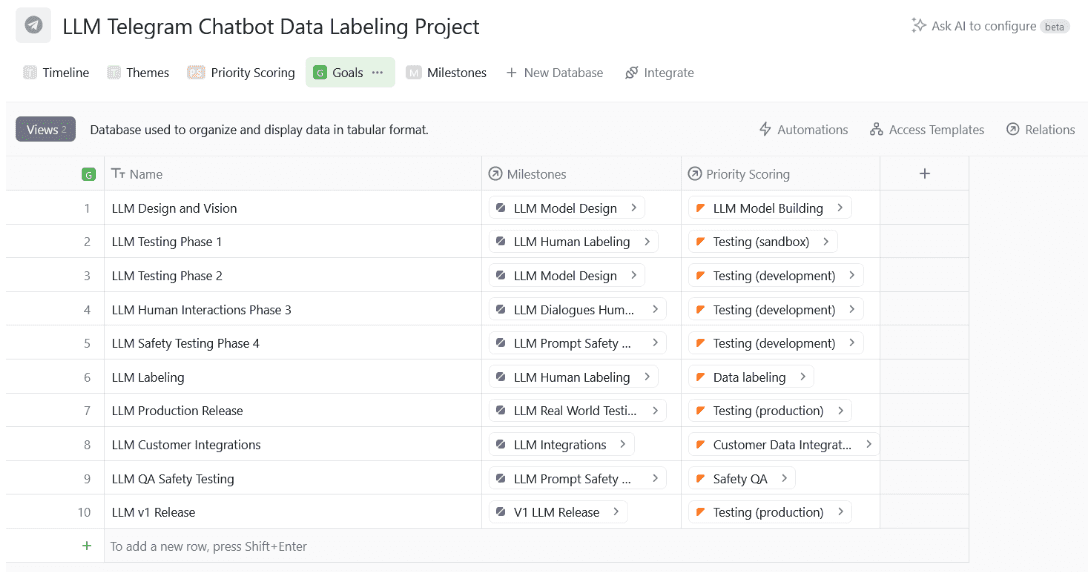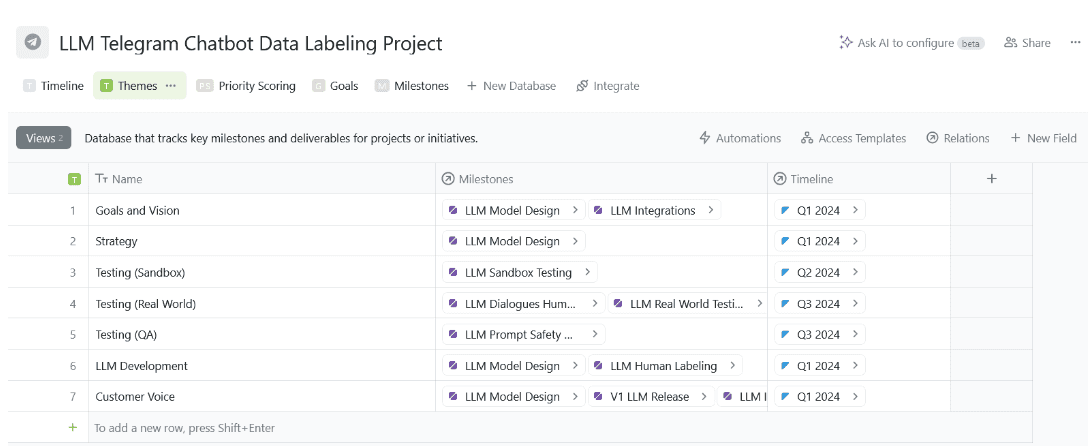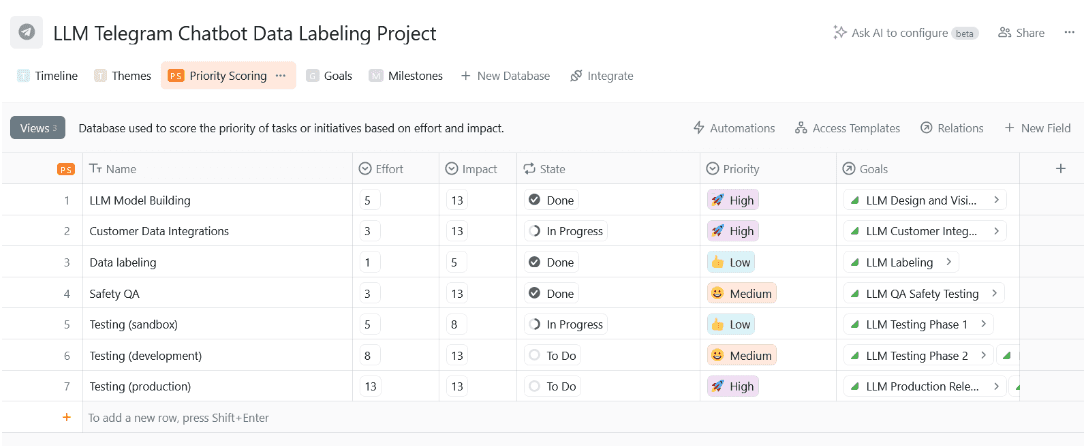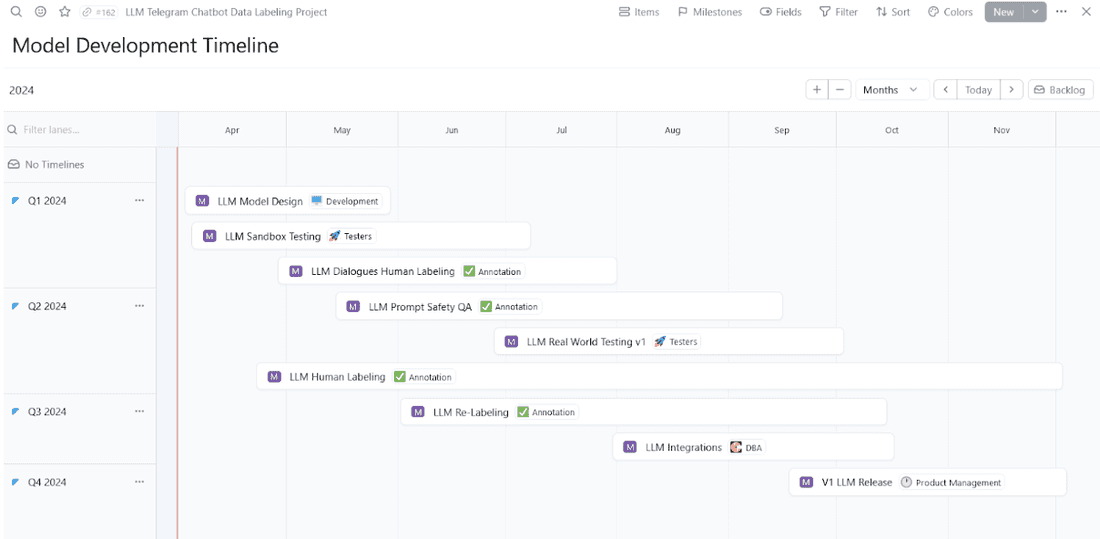Untangling the Agile Roadmap: a No-Nonsense Guide for Product Managers
You might be familiar with buzzwords like Scrum, Kanban, and LSD in the project management circuit. These are all different approaches within the agile framework, a collection of methods that teams use to stay adaptable and efficient. Today’s focus is on something called Agile roadmaps.
Here’s what we’re going to do:
- First off, we’ll get crystal clear about what an Agile roadmap actually is.
- Next up, we’re walking through how you can create one for yourself.
- Finally, we’ll talk about why using an Agile roadmap could be a game-changer for your product management approach.
Get ready as we take a close look at Agile roadmaps, the junction where being agile crosses paths with having a well-thought-out plan.
What is an Agile Roadmap?
Roadmaps and agility might seem like they’re pulled from different playbooks—one suggests a set route, the other flexibility to switch things up.
Yet, an Agile roadmap brings these two ideas together quite smoothly. It’s all about agile thinking—being adaptable, welcoming ongoing feedback, and developing in stages rather than just sticking rigidly to a pre-planned course.
So, what does an Agile roadmap look like? It’s not your typical locked-in schedule for creating products. Instead, it acts as a flexible outline of where you want your product to go and the milestones you aim to hit along the way.
You can think of it more as general guidance that helps steer development while staying open to change when needed—like shifting trends or fresh insights from users.
Old-school roadmaps could corner teams into detailed plans made too early on. This might even hold back new ideas or quick responses needed down the line. On the flip side, Agile roadmaps keep eyes on bigger goals like the overall impact your team aims for and let details get hammered out as work unfolds naturally with time.
When adopting key agile ways, such as clear communication, regular check-ins on progress, and being ready to adjust, you equip teams with everything they need to deftly handle whatever twists and turns come their way during product creation.
It sets sights firmly on “what” should be achieved and “why,” leaving exactly “how” it gets done open-ended but informed by continuous learning along the journey.
How to Create an Agile Roadmap in Five Steps
Putting together an agile roadmap isn’t just about plotting points on a chart; it’s thinking ahead while staying ready to pivot.
Here’s how you can create a flexible plan that guides your product development but also weathers market changes and evolving customer demands.
1. Clarify Your Vision and Goals
Begin with clarity: What’s the finish line for your product? Knowing where you’re headed is essential, it acts like a guiding light for all choices and updates along the way.
Pin down why your product exists, what makes it stand out, and the difference you aim to make in your audience’s world. Identify the problems it will solve and its unique perks. In Fibery, creating the initial vision and goals for the roadmap is easy:

It’s vital at this early stage to set goals that are clear-cut yet realistic—something to stretch towards without overreaching. These will be key markers of progress through which you measure success as well as steer team momentum.
2. Identify Key Themes
Once you have a clear vision, start pinpointing the major areas of focus for your product strategy. Think about what’s important—whether it’s getting users more involved, reaching new markets, or building out features.
To figure this out, you’ll need to really get the lay of the land when it comes to what your users want, who else is out there doing something similar, and any tech shifts that are happening.
It sounds like a lot, but breaking things down into these big buckets helps keep everything organized and moving in the same direction. When using a tool like Fibery, themes can be displayed and linked to phases, goals, and milestones.

3. Prioritize and Plan
Next up is sorting these themes by which ones could make the biggest splash and how soon they need attention.
Remember, though, this isn’t set in stone. As things change around you or as fresh user suggestions come in, you might find yourself reshuffling priorities from time to time. Staying agile is key so that your plans stay relevant and impactful at every turn.

Get together with your team for some good old-fashioned brainstorming sessions backed up by real-world data. You’ll be weighing all sorts of factors trying to decide where best to channel those first bursts of effort without losing sight of future aims, too.
4. Set Milestones
Mapping Your Journey: It’s important to define clear milestones within each of your plans—think of these as key points that mark the progress you’re expecting to see, complete with specific goals and timelines.

These milestones make it easier for everyone on your team to know what they are working towards at any given moment. By having these defined markers, we can turn broad strategies into detailed tasks that include new features or improvements we want to achieve.
5. Review and Adapt
Stay Flexible: Remember, a roadmap isn’t set in stone; it needs to be flexible and adapt just like the Agile approach suggests. This means regularly checking if your plan is still taking you in the right direction toward meeting user needs and staying current with market demands.

Use this time to evaluate which parts are succeeding and which aren’t hitting the mark, and then decide how best to adjust course accordingly.
Keep communication lines open with everyone involved, from developers all the way through customers. This is to ensure your roadmap continuously represents both their feedback and your core business goals.
What are the Perks of having an Agile Roadmap?
In the world of product management, staying on top is all about being ready to pivot with ease. That’s exactly where an Agile roadmap shines.
More than a simple charting tool, it’s a lifeline for teams who must gracefully and effectively deal with the unpredictable nature of product development.
Let’s break down what makes having an Agile roadmap so beneficial:
- Beating Change at Its Own Game: The standout feature of an Agile roadmap is its ability to bend without breaking. Whether it’s new customer needs or sudden tech revolutions, this type of roadmap lets teams swiftly adjust their plans while ensuring they’re always heading in the right direction.
- Teamwork Made Easier: An Agile roadmap lays out your vision plainly for everyone involved—that means every team member gets synced up on what we’re aiming for together. It paves the way for better cooperation because when people see how their work fits into the bigger picture, coordination comes naturally.
- Keeping Stakeholders in Loop: When you have stakeholders peering over your shoulder—be they investors or higher-ups—an understandable and visual agile map can communicate complex strategies simply and effectively. It builds trust by showing them clearly how their support turns into action.
All in all, introducing an Agile roadmap to your product development is a smart way to keep planning and doing in step with each other. This helps make sure that what you’re building stays relevant and meets the changing needs of your users, keeping you ahead in the game.
The PM’s Hot Take
Agile roadmaps are a sort of rebellion against the rigidity of traditional planning. They advocate for fluidity in a world that runs on predictability, pushing us to adapt and iterate rather than blindly follow. But be careful not to mistake flexibility for lack of direction.
Conclusion
Agile roadmaps help teams stay nimble and transparent while they work on creating products. With Fibery’s features, you can guide your product development with both certainty and adaptability in mind.
Are you interested in adopting the Agile approach? Take a closer look at what Fibery offers product managers to see how it could reshape your planning methods.
Want even more knowledge? Our articles on Kanban prioritization and reviewing a Scrum Master offer an extensive view of project management practices that could be very beneficial to you.
Psst... Wanna try Fibery? 👀
Infinitely flexible product discovery & development platform.